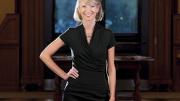January 2023
In challenging times—pandemic and inflation, polarized politics, the horrors of war in Europe—Harvard’s work matters more than ever. Discovering the biological mechanisms that lead to novel vaccines. Exploring the histories and cultures that shape international relations. Probing social media and establishing ethical guardrails for artificial intelligence. Devising effective solutions to the climate crisis. And educating the next generation of leaders.
Harvard’s research and teaching provide the solutions that the world so desperately needs.
Harvard Magazine is privileged to cover the University, on your behalf. As a source of independent journalism on Harvard (and the voice of alumni since 1898), we report on faculty scholarship, emerging disciplines, teaching and learning, and important news—to keep you objectively informed about this essential institution and its extraordinary people. That is our mission—one to which we remain fully committed in this 125th year of publication.
A Modest Makeover
You will find the forthcoming January-February issue slightly changed.
- New headline typefaces, revised page designs, and other improvements make the magazine more readable, without sacrificing content.
- Each separate section (Right Now, John Harvard’s Journal, Montage, and so on) now begins with a consistent look.
- A new section, University People, combines alumni features, The Undergraduate column, and broadened coverage of students from across Harvard—bringing together contents that had previously been separated or combined with news coverage.
- The simplified Table of Contents highlights the sections more directly—and the box on the following page features the large volume of website reporting and social media contents appearing online between bimonthly printed issues.
In addition to their editorial logic—making the magazine work better for you—these changes align with the new look and navigation features coming to harvardmagazine.com later this year. None is for show. All are meant to enhance our service to readers, however you choose to access Harvard Magazine’s journalism.
Earning Your Support
We hope you continue to enjoy your magazine in print and online—and that we continue to merit your support. In a world of rampant disinformation, objective journalism and in-depth reporting also matter more than ever. As we strive to maintain a highly skilled staff and manage rapidly rising costs, we deeply appreciate the alumni and advertisers who choose to sustain this enterprise on all readers’ behalf. You can join them at harvardmagazine.com/support.
With sincere thanks and best wishes for the new year,
Irina Kuksin, Publisher
John S. Rosenberg, Editor









